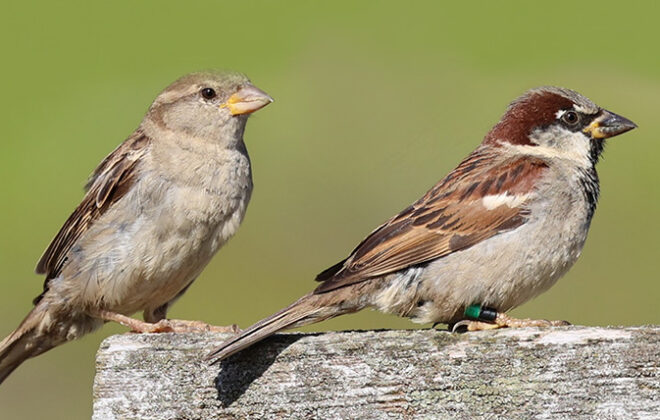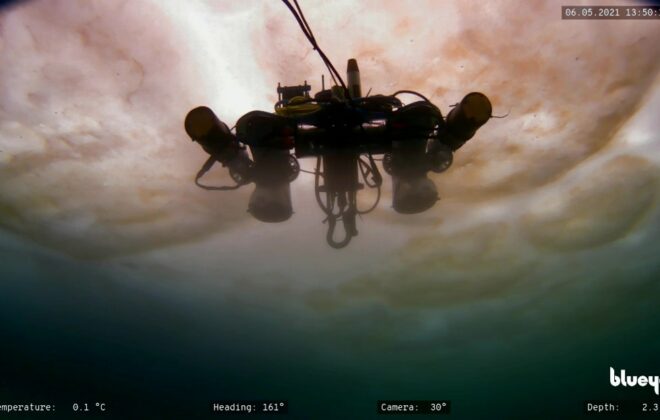Using technology to map ice algae
Life is thriving in the Arctic beneath ice. At the base of the food web is Ice algae. They are an important food source for life in the arctic sea, and flourish in this extreme environment. Modern technology gives us exciting possibilities to learn more about them and how they have adapted to their environment.
I am a marine biologist studying algae that lives under the ice in the Arctic. In the spring, when sunlight becomes available, Arctic waters explode with life starting with the first algae bloom that happens in the lower part of the sea ice (where ice and water meet). This initial bloom is followed by a succession of blooms under sea-ice and in the water column forming the basis of the food web. Zooplankton (small animals that drift with currents) graze on algae and other organic matter. In turn, larger animals such as fish thrive as more food become available, and many whale species migrate north for this feeding frenzy.
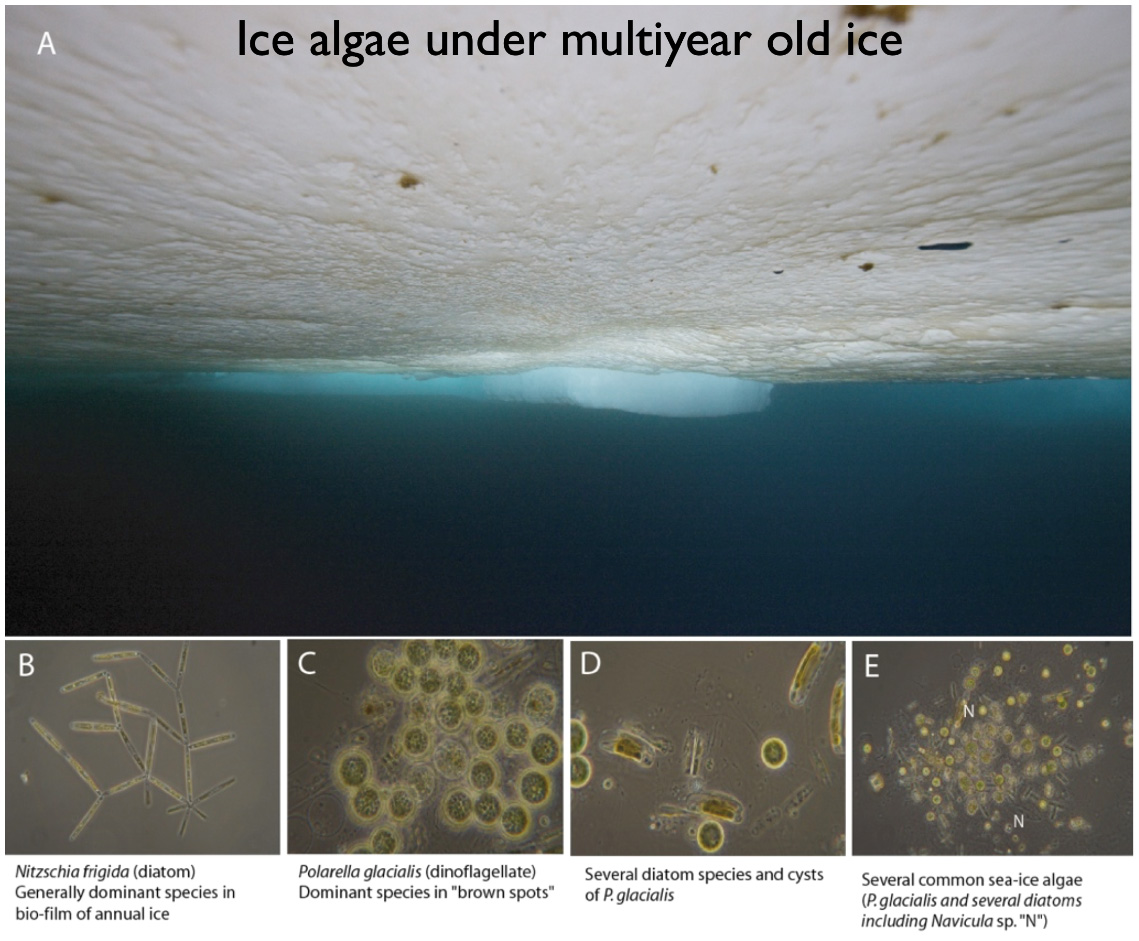
Surviving the Polar Night
As days get shorter and nutrients are used up, microalgae cells find different strategies to survive the dark winter. Some groups release spores that can survive through winter. Other species may simply go into a dormant stage. Heavier cells sink to the seafloor and get buried in the sediments while others get trapped into sea ice waiting for daylight to come again. We still have a lot to learn about the life cycle and how algae survive in this extreme environment where water temperatures can get down to -1.8C with no sunlight available for photosynthesis. The closer to the North pole, the darker it gets during winter.
Understanding algal dynamics is crucial for better predicting the consequences of climate change. Increasing temperatures are causing thinning of the ice sheets and a decrease in volume of multiyear ice. These, in turn, affect the cycle of ice algae which is the base of the food web. For my research, I am interested in learning more about who, how and where ice algae survive, thrives, and how this change over the seasons. To study these questions, I am using a combination of different sensors to collect environmental data such as light, temperature.
What are algae?
Let us first make something clear; Algae are not plants. Although historically algae have been classified under the Kingdom of Plantae (as opposed the Kingdom Animalia), many algae groups have been moved to separate branches in the tree of life. One of the critical differences is how they function. Plants have connected tissues that work together to transport water and nutrients throughout its body. Therefore, plants typically have a root system, stem (or trunk in the case of trees) and leaves.
In contrast, algae have what we call a non-vascular system where each cell is responsible for its survival (absorbing water). Like plants, algae require sunlight to survive. They use solar energy to convert water and CO2 into sugars they need for survival releasing oxygen as a by-product. This process is known as photosynthesis. Marine algae release more oxygen into our atmosphere than all the forests and rainforest on earth and play an essential role in absorbing carbon from the atmosphere.
Studying ice algae
Traditionally, researchers drill into the ice retrieving an ice core which can be used by several scientists in different disciplines. For examples, geologists can use them to reconstruct past climate conditions (especially when looking at multiyear ice). The highest quantity of ice algae is usually found in the bottom two centimetres of the core (the side that is in contact with seawater). However, some algal cells can get trapped in small pockets as the ice forms. Although ice cores have given us insight into the different groups of algae that live in the arctic, they cover, however, a very small area (a few centime diameters each time) due to the patchiness of algae growth. Therefore, estimating how much algae is growing in a region can be challenging.
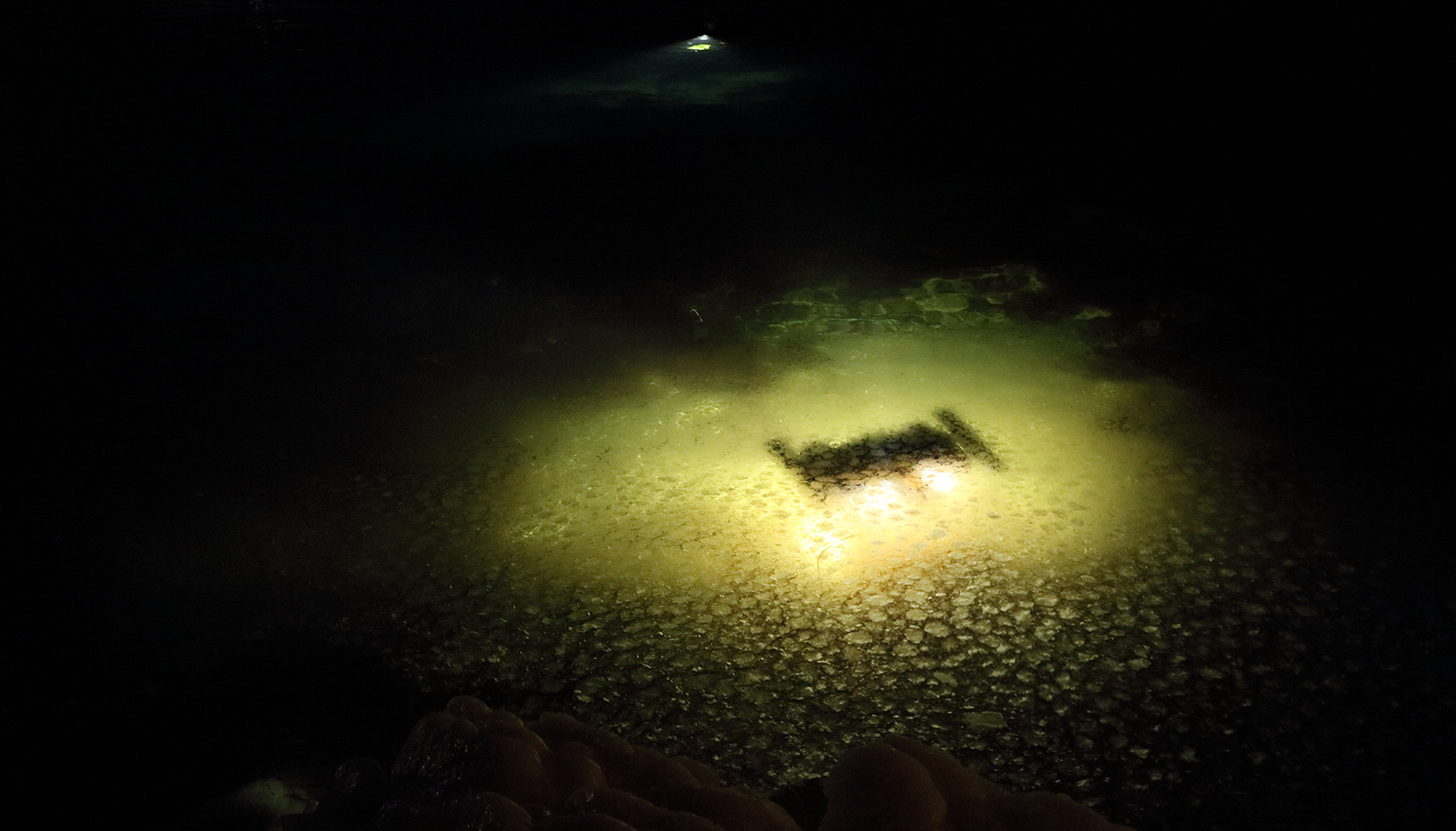
Fortunately, we are living in the age of technological advancement. I have the exciting privilege to work alongside engineers and technicians to find better ways of collecting information that will help understand our world. We are using Remotely Operated Vehicles (robots controlled by researchers) mounted with an Underwater Hyperspectral Imager (UHI) to map the underside of the ice. UHI is a type of camera that uses the whole range of wavelength to take a picture. A typical camera (that most people use) will take a picture using Red, Blue and Green wavelengths (called RGB camera). Colour images we usually come across are comprised of a mosaic of these three colours.
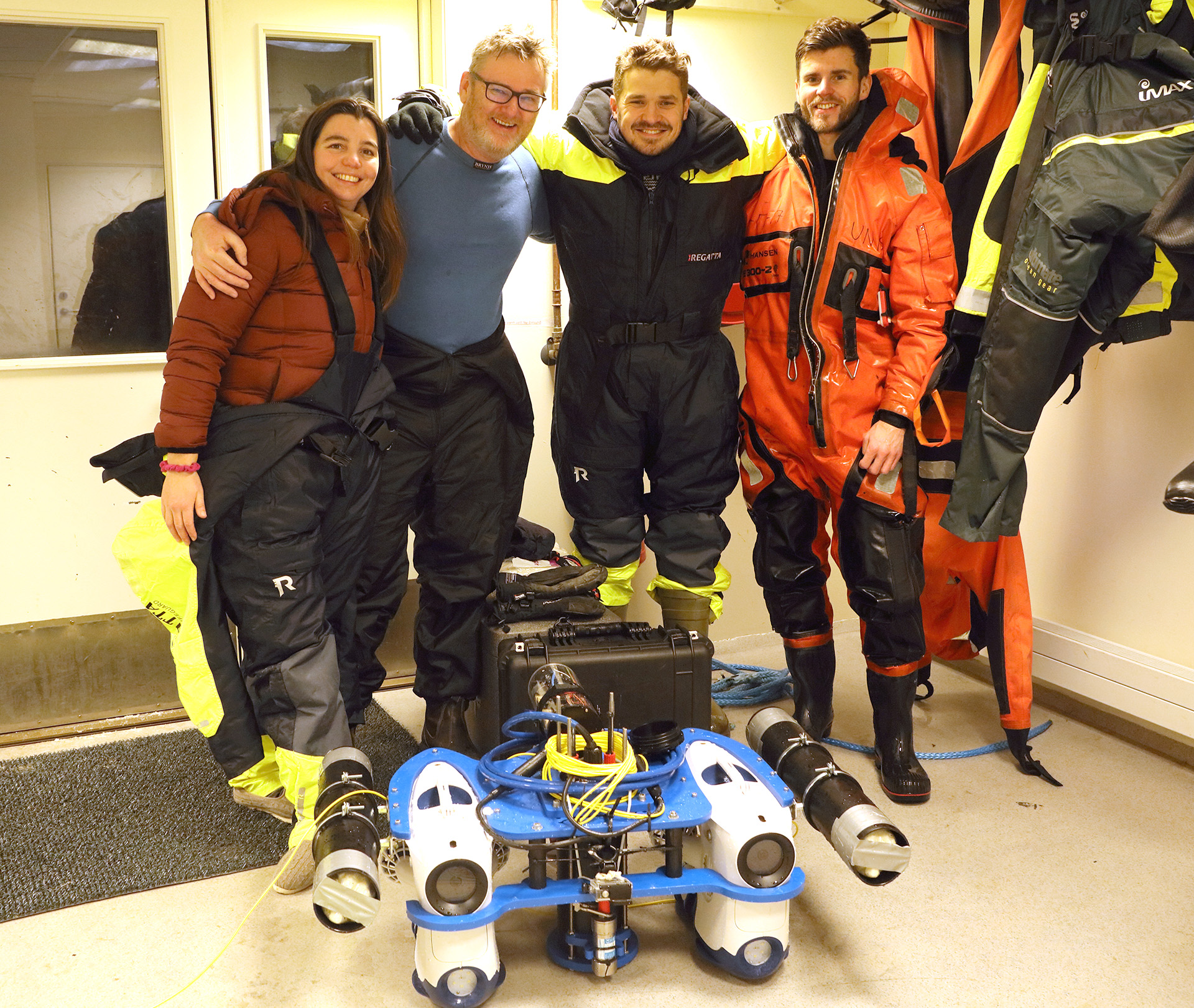
With a hyperspectral camera, all visible waves length (colours) are measure creating a unique fingerprint for each object of interest. Using this technology in combination with computer recognition and learning software will enable us to distinguish between the different objects of interest and maybe even identify different algal groups. In January 2020, I participated in a Polar Night Cruise around Svalbard, where we were able to test a UHI system mounted on a small ROV. We tested this setup to map macroalgae (such as Kelp) in Ny-Ålesund. In the future, we will attach the camera on this ROV facing up so that we can map the underside of the sea ice. The interface between biology and new technology is giving us exciting insights into life on earth that most people are unaware of. I remain hopeful that with a better understanding of how ecosystem functions, we will be more prepared to face the future.

Natalie Summers
Natalie Summers is a PhD candidate at the Department of Biology at NTNU.
Search
Søk
Categories
- Arctic Research
- Arkitektur
- Bærekraft
- Bioingeniørfag
- Biologi
- Biology
- Biomedical Laboratory Science
- Biotechnology
- Bioteknologi
- Chemical Engineering
- Chemistry
- Climate
- Computer Science
- Datateknologi
- Digital
- Elektronikk
- Energi
- Energi
- Energy
- Engineering
- Engineering
- Environment
- Food Science
- Forskning
- Fysikk
- Fysikk
- Havbruk
- Informasjonsteknologi
- Informasjonsteknologi
- Ingeniørvitenskap
- Kjemi
- Kjemisk prosessteknologi
- Kjemisk prosessteknologi
- Kreftbehandling
- Kybernetikk
- Marine Technology
- Materialer
- Materials Science
- Materialteknologi
- Matvitenskap
- Meninger
- Miljø
- Min ph.d.
- My PhD
- My PhD
- My postdoc
- Nanotechnology
- Nanoteknologi
- Ocean
- Oil and gas
- Physics
- Research
- Simulering og visualisering
- Spør en forsker
- Studentliv
- Sustainability
- Ukategorisert
- Universitetsliv
- University Life
Kategorier
- Arctic Research
- Arkitektur
- Bærekraft
- Bioingeniørfag
- Biologi
- Biology
- Biomedical Laboratory Science
- Biotechnology
- Bioteknologi
- Chemical Engineering
- Chemistry
- Climate
- Computer Science
- Datateknologi
- Digital
- Elektronikk
- Energi
- Energi
- Energy
- Engineering
- Engineering
- Environment
- Food Science
- Forskning
- Fysikk
- Fysikk
- Havbruk
- Informasjonsteknologi
- Informasjonsteknologi
- Ingeniørvitenskap
- Kjemi
- Kjemisk prosessteknologi
- Kjemisk prosessteknologi
- Kreftbehandling
- Kybernetikk
- Marine Technology
- Materialer
- Materials Science
- Materialteknologi
- Matvitenskap
- Meninger
- Miljø
- Min ph.d.
- My PhD
- My PhD
- My postdoc
- Nanotechnology
- Nanoteknologi
- Ocean
- Oil and gas
- Physics
- Research
- Simulering og visualisering
- Spør en forsker
- Studentliv
- Sustainability
- Ukategorisert
- Universitetsliv
- University Life


